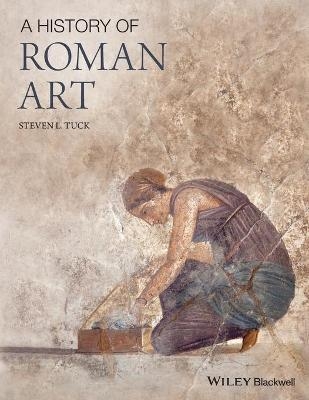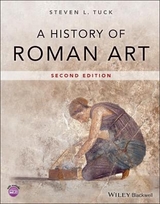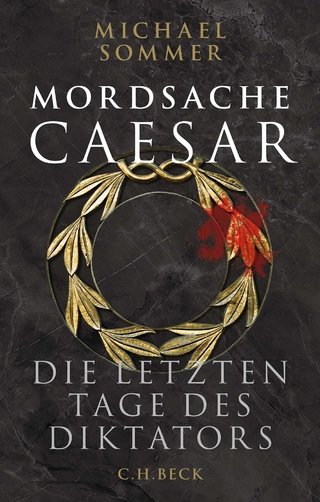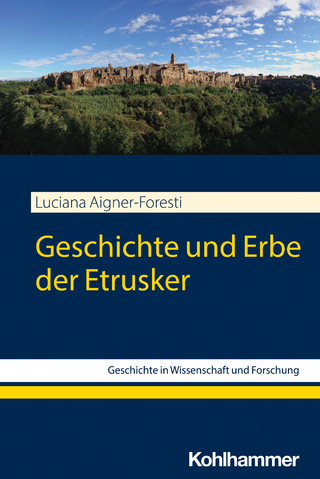
A History of Roman Art
Wiley-Blackwell (an imprint of John Wiley & Sons Ltd) (Verlag)
978-1-4443-3026-7 (ISBN)
- Titel erscheint in neuer Auflage
- Artikel merken
* Extensively illustrated with 375 color photographs and line drawings * Broadly defines Roman art to include the various cultures that contributed to the Roman system * Focuses throughout on the overarching themes of Rome's cultural inclusiveness and art's important role in promoting Roman values * Discusses a wide range of Roman painting, mosaic, sculpture, and decorative arts, as well as architecture and associated sculptures within the cultural contexts they were created and developed * Offers helpful and instructive pedagogical features for students, such as timelines; key terms defined in margins; a glossary; sidebars with key lessons and explanatory material on artistic technique, stories, and ancient authors; textboxes on art and literature, art from the provinces, and important scholarly perspectives; and primary sources in translation * A book companion website is available at www.wiley.com/go/romanart with the following resources: PowerPoint slides, glossary, and timeline Steven Tuck is the 2014 recipient of the American Archaeological Association's Excellence in Undergraduate Teaching Award.
Steven L. Tuck is Professor and Chair of Classics at Miami University. In 2012, he received the E. Phillips Knox award, Miami University's highest honor for innovative and effective undergraduate teaching. He is the author of Latin Inscriptions in the Kelsey Museum: The Dennison and De Criscio Collections (2006).
List of Illustrations xii Preface xxi Note to Students xxiii Acknowledgments xxv Walk Through Tour xxvi Timeline xxviii About the Website xxxiii 1 Introduction to Roman Art History 1 Cultural Property Controversies 2 Dating Dilemmas in Roman Art History 3 Restoration Issues in Roman Art History 4 The Role of Elites in Public Art and Architecture 4 Italic versus Classical Styles and Forms I: Temples 5 Italic versus Classical Styles and Forms II: Portraiture 7 Female Portraiture and Embedded Values 9 Romans Judging Roman Art: Values and Class 11 Art, Context, and Social Status I: The Tomb of Vestorius Priscus 12 Art, Context, and Social Status II: The Roman House 14 Narrative Moment 16 Suggestions for Further Reading 17 2 Regal Period, 753 509 bce 18 The Etruscans and the Question of Etruscan Dominance Timeline 18 Introduction to the World of Early Rome and Italy 19 The Etruscans 21 Art in Latium, the Region around Rome 27 Archaic Rome: City Planning and Architecture 29 Etruscan Tomb Paintings 41 Greco-Italic Archaic Architecture: A Doric Temple at Pompeii 45 Conclusion 46 Suggestions for Further Reading 46 3 The Early Republic, 509 211 bce 48 The Spread of Roman Power and Forms Timeline 48 Introduction to Early Roman Republican Art 49 Lucanian Tomb Painting, Paestum 55 Roman Architecture and Urban Planning 70 Conclusion 75 Suggestions for Further Reading 76 4 The Later Republic, 211 31 bce 77 The Origins of a Hellenistic Roman Culture Timeline 77 Introduction 78 Architecture and Urban Planning 78 Roman Wall Painting in the Late Republic 94 Late Republican Sculpture 108 Conclusion 111 Suggestions for Further Reading 112 5 The Age of Augustus, 31 bce 14 ce 113 The Art of Empire Timeline 113 Augustus 114 The Portraits of Augustus 115 Augustus and the City of Rome 118 Third Style Wall Painting 132 The Emulation of Augustan Art 133 Traditional Italic Style in the Age of Augustus 137 Concrete Architecture 140 Conclusion 141 Suggestions for Further Reading 143 6 The Julio-Claudians, 14 68 ce 145 The Rise of Roman Dynastic Art Timeline 145 Introduction 146 Tiberius, 14 37 ce, and Caligula, 37 41 ce 146 Claudius, 41 54 ce 157 Nero, 54 68 ce 163 Public Buildings and Interior Decoration, Pompeii 171 Conclusion 177 Suggestions for Further Reading 177 7 The Flavians, 69 96 ce 178 Civil War, Disaster, and Response Timeline 178 Civil War of 68 69 ce 179 Vespasian and Titus, 69 81 ce 180 Domitian, 81 96 ce 197 Conclusion 209 Suggestions for Further Reading 210 8 Trajan and Hadrian, 98 138 ce 211 Emperors from the Provinces Timeline 211 Nerva, 96 98 ce 212 Trajan, 98 117 ce, and Hadrian, 117 138 ce 213 Sculpture 225 Conclusion 244 Suggestions for Further Reading 244 9 Antonine Emperors, 138 192 ce 245 From an Empire of Gold to One of Rust Timeline 245 Introduction 246 Antonine Portraiture 247 Architectural Sculpture 253 Architecture 257 Wall Painting and Mosaics 260 Sarcophagi 263 Fayum Mummy Portraits 268 Conclusion 271 Suggestions for Further Reading 272 10 Civil War and Severan Dynasty, 193 235 ce 273 Calm before the Storm Timeline 273 Introduction 274 Trends and Developments in Severan Art 274 Conclusion 299 Suggestions for Further Reading 300 11 The Third Century and the Tetrarchy, 235 306 ce 301 Crisis and Renewal Timeline 301 Third-Century Emperors and the Tetrarchy 302 Coin Portraits of the Third Century ce 309 Historical Reliefs 311 Imperial Architecture 320 Conclusion 330 Suggestions for Further Reading 332 12 Constantine, 306 337 ce 334 Christian Empire and the Decline of the West Timeline 334 Constantine, the First Christian Emperor 335 Conclusion 356 Epilogue: The Fall of Rome and the Rise of New Romes 357 Suggestions for Further Reading 362 Glossary 363 Guide to Further Reading 366 Index 368
| Erscheint lt. Verlag | 30.1.2015 |
|---|---|
| Verlagsort | Chicester |
| Sprache | englisch |
| Maße | 217 x 278 mm |
| Gewicht | 1090 g |
| Themenwelt | Kunst / Musik / Theater ► Kunstgeschichte / Kunststile |
| Geschichte ► Allgemeine Geschichte ► Altertum / Antike | |
| Sozialwissenschaften ► Soziologie | |
| ISBN-10 | 1-4443-3026-8 / 1444330268 |
| ISBN-13 | 978-1-4443-3026-7 / 9781444330267 |
| Zustand | Neuware |
| Informationen gemäß Produktsicherheitsverordnung (GPSR) | |
| Haben Sie eine Frage zum Produkt? |
aus dem Bereich



